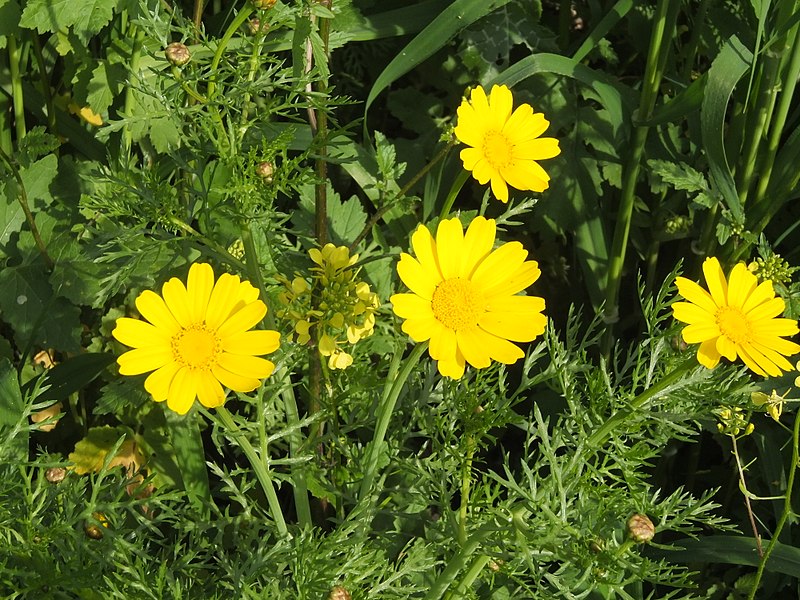
Also known as crown daisy and edible chrysanthemum, this cool weather annual is native to the Mediterranean region and is a member of the aster family, Asteraceae, that also includes sunflower, yarrow, and lettuce. The flowers appear in a wall painting of the House of the Golden Bracelet and their use in making garlands has been suggested. This idea may be an inference from the common name, garland chrysanthemum, or from the specific epithet of the plant, coronarium that means relating to a garland. In modern times, the greens of C. coronarium are popular as a vegetable in Asian cuisine but there is no mention of this use in ancient Roman times. The ancient Roman naturalist, Pliny the Elder (d. 79 AD), discusses the chrysanthemum but most scholars think he means Chrysanthemum segetum, the corn chrysanthemum, native to the eastern Mediterranean, and not associated with garland making. Photo Credit Davidbena-Wikipedia

Description: Plants grow 2-4 tall and have well branched stems bearing coarse, alternate, lobed or deeply incised leaves with linear leaflets. The leaves are up to 3″ long, tend to be light green, and slightly clasp the stem. From mid summer into fall, 1.5-2″ wide flowerheads appear with 10-15 yellow ray flowers and numerous darker yellow disc flowers. Cultivars are available that vary most significantly in fullness, height, and ray color. Good choice for a prairie garden. Photo Credit Wikipedia
Size: 2-4′ H x 2′ W
Light: Full sun
Soil: Average, moderately moist, well-drained
Hardiness: An annual that grows best in cool weather